Exploring Kantha Stitching
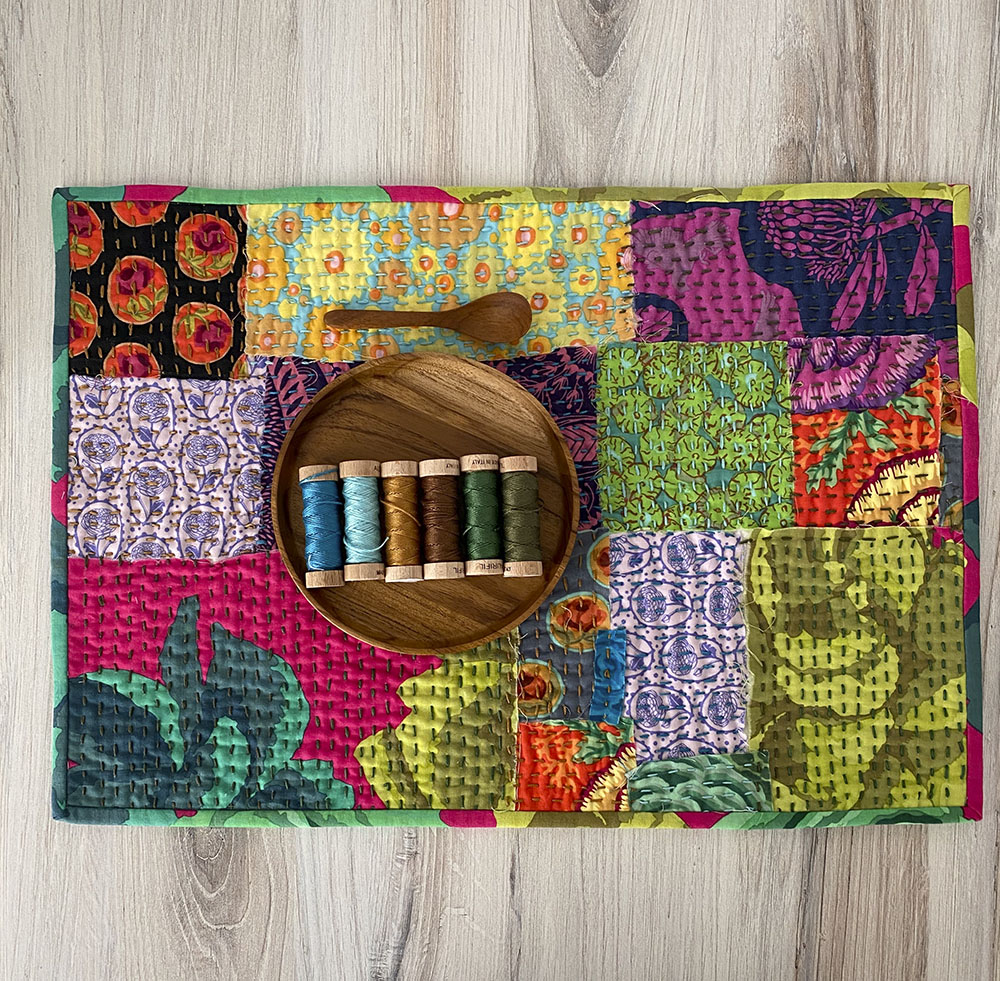
Oh what a weird week…
I have only left the house to run 2 short errands since last Wednesday night, and will continue to stay put. The other day, when I pulled up at the print shop I use, to pick up my order, it was handed to me through the car window, wearing gloves. Truly a strange alternate reality right now.
A really good week, it seems, to stab at fabric over and over again with a needle threaded with embroidery thread!
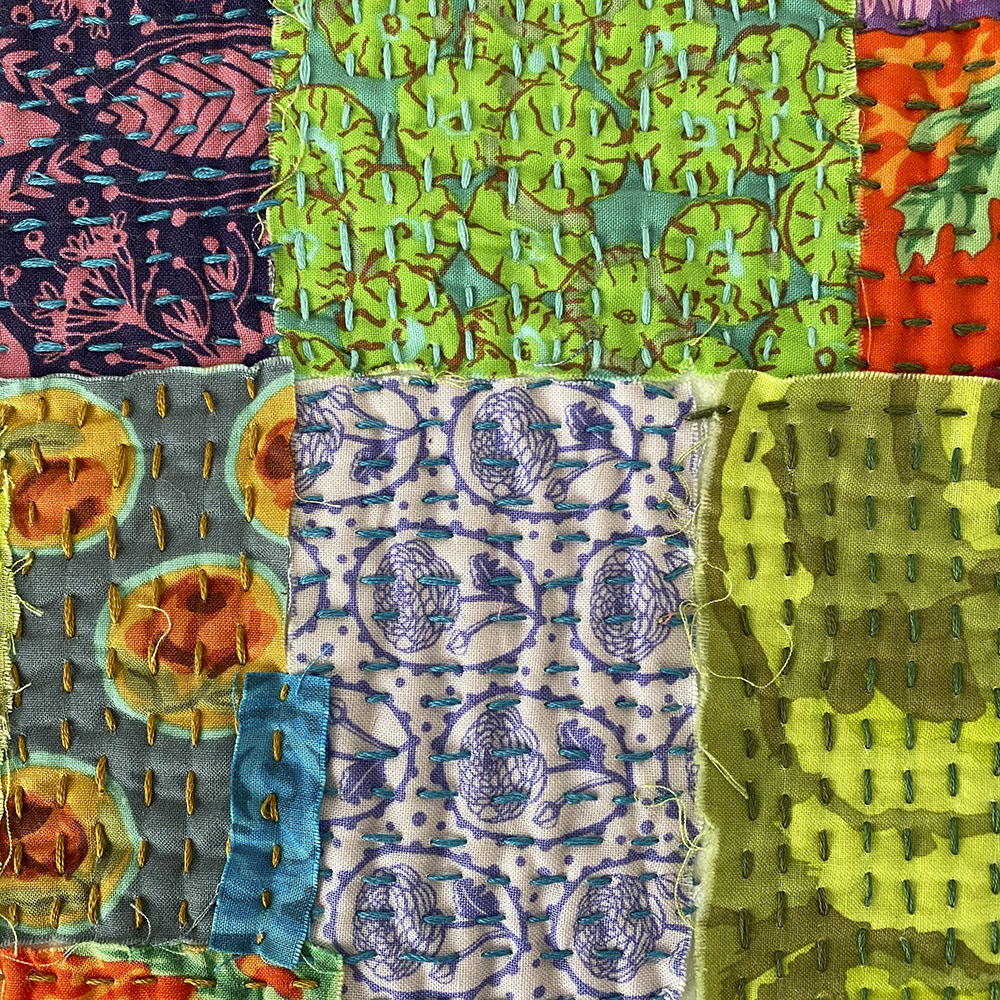
The challenge from Aurifil for their artisans this month is exploring Kantha stitching. It is a very traditional hand stitching method originating in Southeast Asia. Used for holding lots of layers of fabric together to make one larger piece of useable cloth. These layers are often remnants of saris that are no longer wearable, and from my reading, the number of layers is usually between 4 and 6. The layers are, well, layered together and held with rows and rows and rows of running stitches, hand sew across the quilt. Making a quilt that weight-wise is very suited for the region’s climate.
The Kantha quilts that result are usually bright and colorful, with lots of wonderful textures from the hand done stitches. One quick search on Pinterest can show you lots of different examples of beautiful Kantha quilts.
Supplies
For my own attempt at Kantha stitching, I chose a variety of Kaffe Fassett and Anna Maria Horner fabrics from my stash. Most of these are scraps from other projects, or fat quarters. My goal was to try out Kantha stitching, make a piece that I could turn into a placemat for my lunch. (Working at home, my lunch can sometimes consist of grabbing a handful of cereal from the pantry.) I want to try to make more time for a decent lunch and putting in on something colorful like a handmade placemat might help me remember to take the time.
In the true effort of using what I have here at a time like this (which is plenty), I opted to use my Aurifil 12 wt Cotton Embroidery floss that I had leftover from the cross stitch flower project here. The colors couldn’t have worked better!

To Make-
To start, I cut various sizes of squares and rectangles and laid them all onto a layered piece of 13″ x 16″ batting and backing fabric. (The final placemat will be 12″ x 15″). It is a bit like putting together a puzzle, but allowing some of the edges to overlap. Raw edges are perfectly acceptable! I put the fabric pieces directly onto the batting, and held them down with my favorite appliqué glue for projects like this. 5 minutes for the glue to dry, and I was ready to stitch. But first I drew some straight lines heat erasable pen to keep my lines of running stitches fairly straight. This method of stitching is very forgiving. I also tried some recently purchased rubber needle grips and wow! They make pulling the thread through the layers much easier!
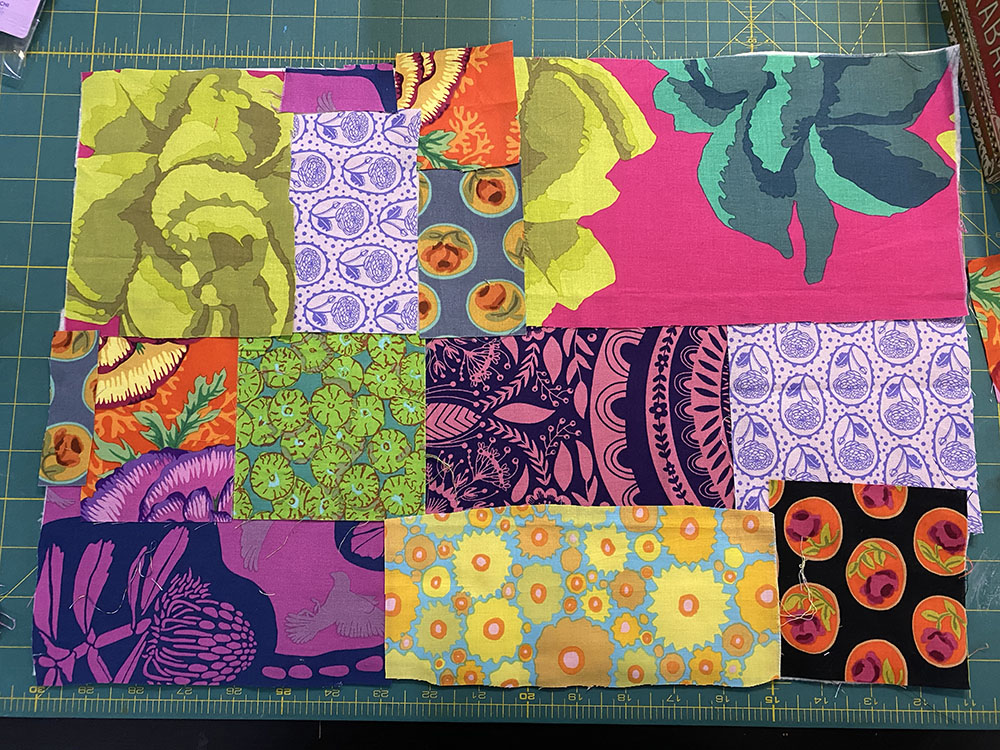
Over a period of three nights, as the Corona virus took a stronger and stronger hold on both the city I live in and our nation, I stabbed over and over again. Sometimes I would go in one direction, the maybe for the next fabric scrap I would change directions. I randomly chose the Aurifil floss colors, sometimes even switching while on the same fabric. It was fun to just play and experiment. A very welcome diversion! Also, not one that made it unable for me to watch the news here and there, even FaceTime with family.
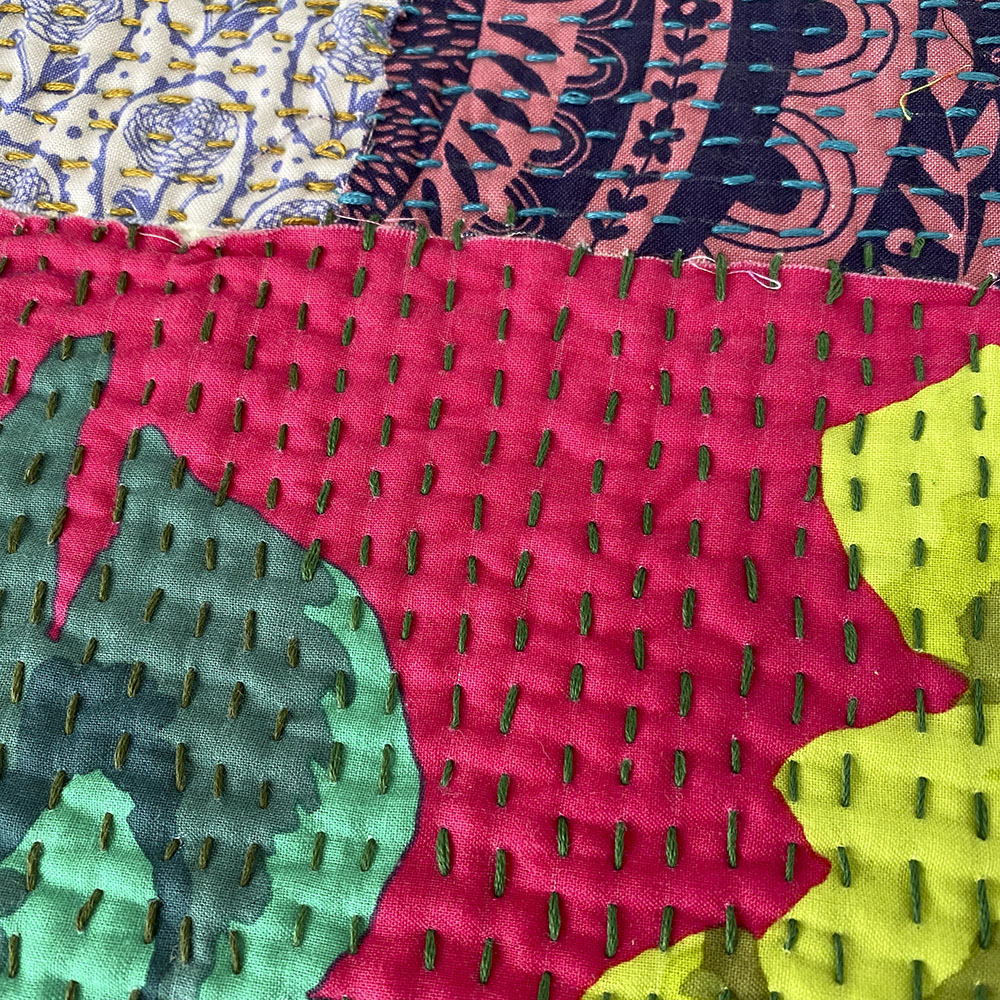
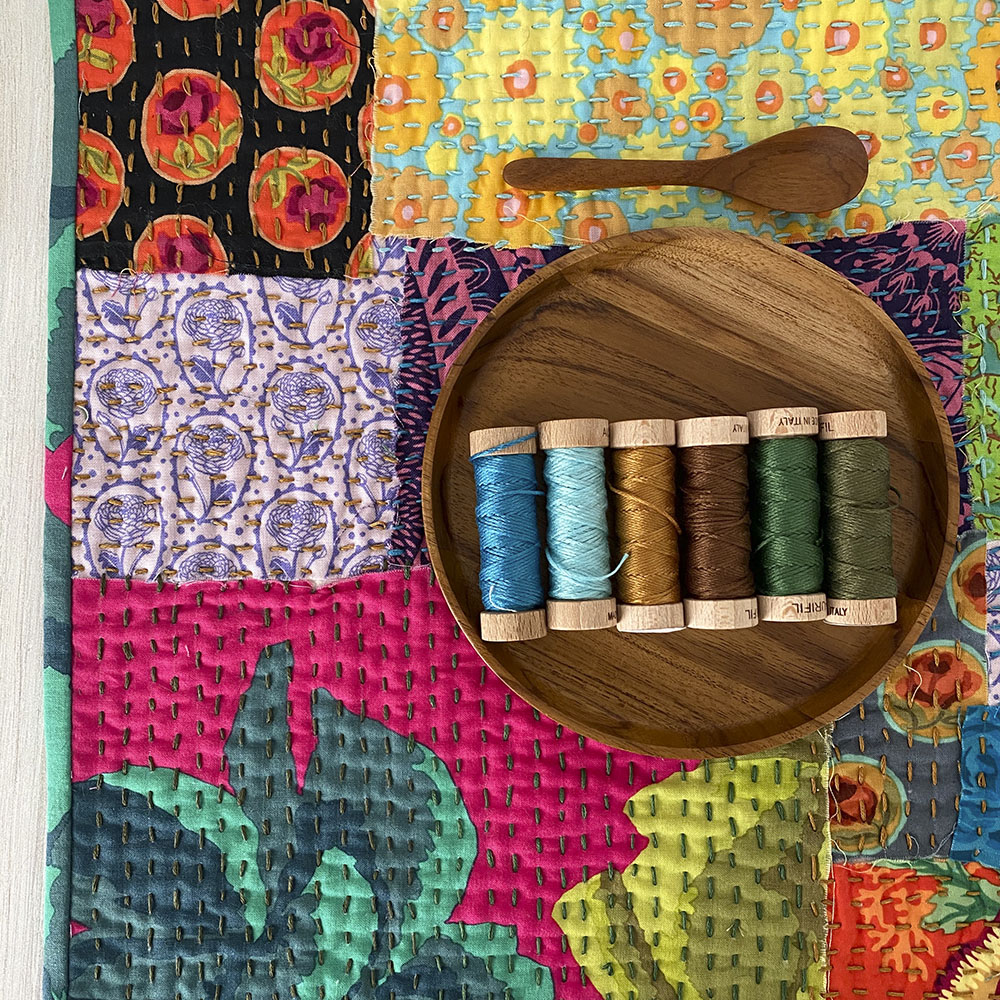
When I was finished with all the stitching, I marked off, then machine stitched around the piece. I did this to secure all the stitches that ran all the way up to the ends of the piece. Then trimmed the edges and squared the piece up to 12″ x 15″. There was just enough left of one of the printed fabrics left to make a binding. Having a binding around the edge seemed to finish the piece off neatly. (The back might be my favorite part, I forgot to take a picture of it. The stitches and texture are wonderful!) I really love the Aurfil floss because it has the weight of a Perle Cotton (easy to stitch with) but is doesn’t have as much of a sheen. Meaning it doesn’t try to take all the attention.
Plus I am in love with the wooden spools, and am already dreaming up DIY uses for them when I sew through all the floss!
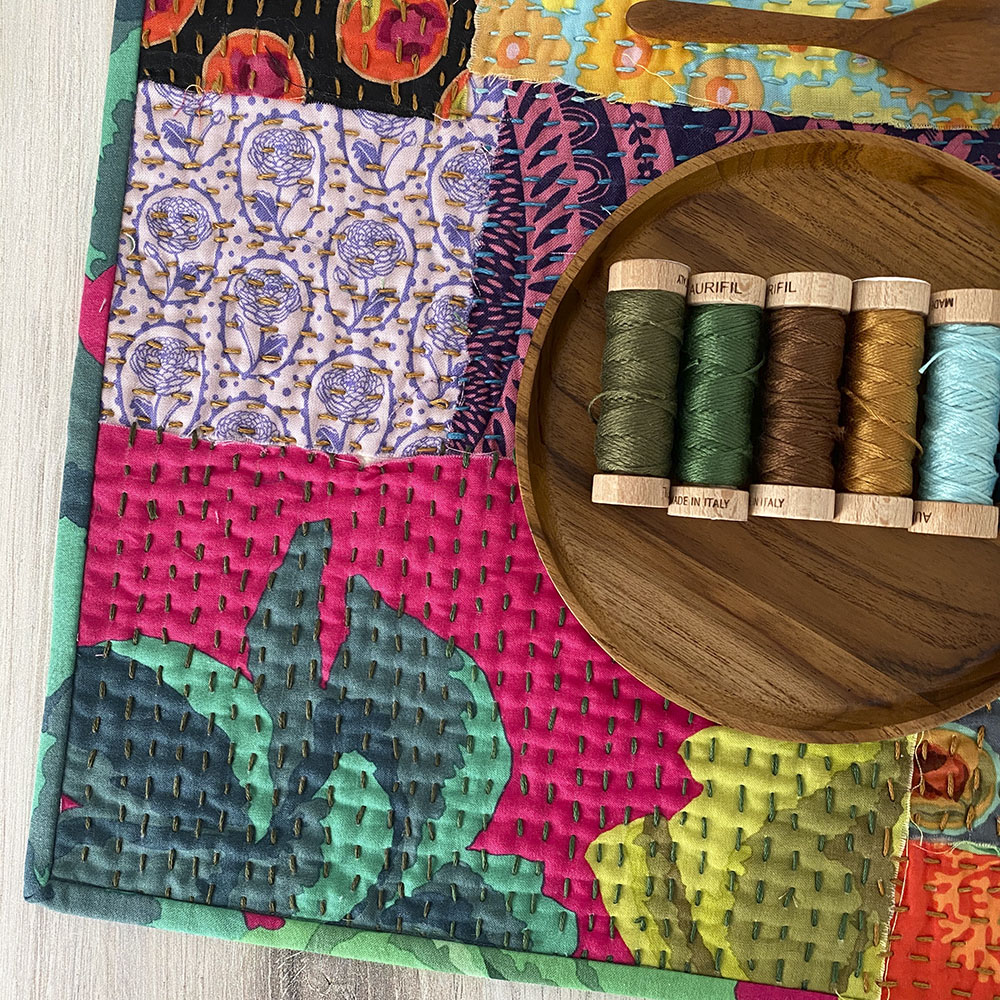
I hope you all stay safe and healthy out there!

